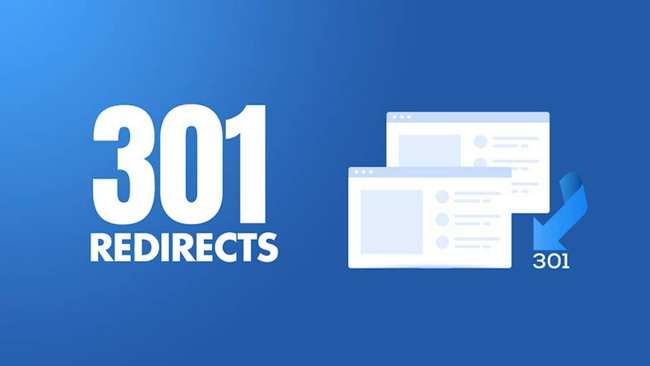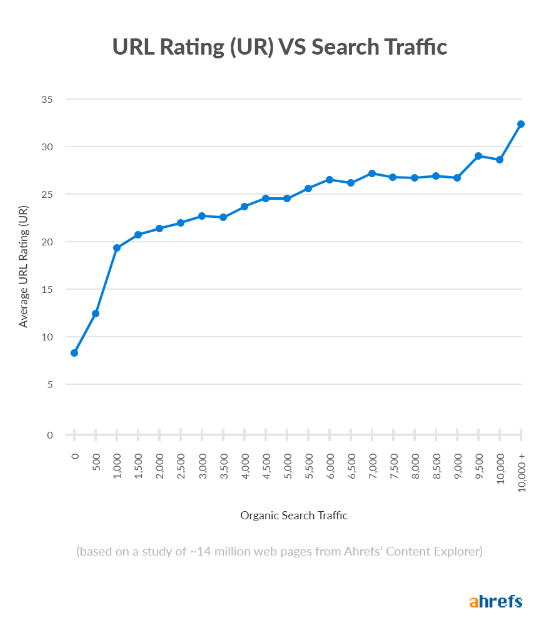301 redirects are powerful tool in web development and search engine optimization. Simply put, it tells web browsers and search engines that a page has permanently moved to a new URL. Think of it as a friendly signpost in the digital landscape, automatically guiding anyone who tries to visit the old URL to the new one.
This means you can maintain or improve your organic rankings and traffic when you move or update your pages as long as you use 301 redirects correctly.
However, if you don’t use 301 redirects or misuse them, you can lose your rankings and traffic, as well as create issues such as broken links, crawl errors, and duplicate content.
This article will explain how to use 301 redirects effectively for your SEO strategy. We will cover:
- How to implement 301 redirects on different platforms and servers
- When to use 301 redirects for different scenarios
- How to avoid common pitfalls and mistakes with 301 redirects
By the end of this article, you will clearly understand how 301 redirects work and how to use them to optimize your website for search engines. Let’s get started!
What is a 301 redirect?
A 301 redirect is a permanent way to redirect visitors from one URL to another. It’s particularly handy when you change a page’s URL on your site, helping you smoothly transition visitors from the old URL to the new one.

If you’re moving to a new domain, the old URL automatically sends visitors to the new one. This ensures that people always find the content they want, preserving your search engine rankings.
However, the importance of 301 redirects extends beyond mere redirection. When you implement them, you’re signalling to search engines that the new URL is the official and lasting replacement for the old one.
You’re also requesting that they transfer all the good stuff, like link strength and relevance signals, from the old URL to the new one. This means that even when you change your web pages, your organic rankings and traffic can remain steady or even improve if you use 301 redirects correctly.
When should you use a 301 redirect?
The 301 redirect is a robust tool that can be used in the following cases:
1. Changing a URL
Perhaps your original URL wasn’t as optimized as it could have been, or you’re re-organizing your website’s URL folder structure.
2. Recreating a piece of content
If you want to start from scratch with a new page, you’ll want to set up a 301 redirect from your old URL to the new one. This way, your old page’s ranking signals will be passed on to the new one. After you’ve done this, be sure to unpublish and archive the old page.
3. Consolidating several pieces of content
If you have multiple articles of content competing for the same keywords or discussing the same topics, you might consider consolidating them. However, you don’t want to lose the search engine visibility that those old pages might have.
Once you’ve created your new, consolidated resource, set up a 301 redirect from each old page to the new one. This will help preserve any search engine rankings that those old pages might have.

4. Transferring content from one domain to another
When moving your website to a new domain, it’s essential to use 301 redirects from the old pages to the new ones. This keeps your site’s ranking intact and ensures all visitors reach the new domain.
This process is straightforward if you change the domain without altering your site’s structure or content. However, if you’re also changing your content, make careful redirect choices to help users find what they need. This way, your old pages stay visible by pointing users to new pages with similar content.
Besides, when you’re implementing page-to-page 301 redirects from one domain to another, there’s a specific challenge you need to keep in mind: your redirects have to be served from the original URL.
5. Transferring a Website During a Phased Web Launch
If you’re transferring your website from one web address to another and doing it in stages, here’s a suggestion: Start by releasing the main pages in the first stage, the rest in the second stage, and so on.
We advise creating a plan to make this move smooth and prevent any problems. This plan should include a list of all your old web addresses and how you will redirect them in each stage. This way, your visitors will be clear and comfortable during the transition.
Do 301 redirects affect SEO?
Many SEO experts pay a lot of attention to how 301 redirects impact PageRank because they know how significant PageRank is in Google’s eyes.
For those who might not be familiar, PageRank is Google’s way of measuring a page’s importance based on how many good-quality links it has.
While PageRank is just one of many factors that affect a webpage’s ranking in search results, it’s commonly thought that having a higher PageRank can lead to better positions in search engine results. Therefore, SEO professionals must work on improving their PageRank if they want to rank higher in search engine listings.

Besides, Ahrefs’ URL Rating and the amount of organic traffic a page receives have a strong positive correlation. This is likely because URL Rating is similar to PageRank, and pages with higher ratings tend to get more traffic.

And how does this information pertain to 301 redirects?
301 redirects indicate to search engines that a page has been moved to a new location. This was an issue in 2016, where it was debated how much PageRank was lost in the process. Some say as much as 15% was lost in the transition.
Then, in 2019, everything changed. If you redirect domain.com/page1 to domain.com/page2, the redirected page will have as much power as the original page.
This is a BIG deal because 301 redirects can help boost organic traffic. But 301 redirects can also cause other SEO-related issues that aren’t often discussed.
How to fix existing 301 redirect issues on your site
If you’re noticing that some of your website’s pages are redirecting incorrectly, there are a few things you can do to fix the issue:
1. Check to make sure that the HTTP version of your site is redirecting to HTTPS:
From 2019, every website should use HTTPS for added security for visitors, and the fact that Google uses HTTPS as a ranking signal.
Additionally, SSL certificates are free via Let’s Encrypt – making it a no-brainer to implement this additional layer of security to your website.
2. Remove any pages with 301 status codes from your sitemap
Regarding sitemaps, Google uses them to determine which pages to check and include in its index. But pages with a 301 status code no longer exist, so asking Google to prevent them is pointless.
If these pages are still listed in your sitemap, Google might keep visiting them whenever it matches your website. This is unnecessary and takes up valuable time and resources.
And if you’ve redirected pages on your website using a 301 status code, make sure to take them off your sitemap so that Google doesn’t spend time crawling them for no reason.
3. Fix redirect chains
A redirect chain happens when a user is sent to multiple URLs before reaching the one they wanted. These chains can load pages slowly and harm the user’s experience, so it’s a good idea to prevent them when possible.
4. Fix redirect loops
Redirect loops happen when a URL is sent back to another URL in the chain, causing an infinite loop of redirects. This can be confusing and frustrating for both search engines and users.
5. Fix broken redirects
Broken redirects can be a real pain for users. They can click on a link and be taken to a dead page, which can return a 4XX or 5XX HTTP response code. This can be frustrating and cause them to leave your site altogether.
6. Redirect 404 pages
Seeing a 404 page isn’t always a bad thing. If a user types in the wrong URL, for example, the error page lets them know that the link they’re trying to access doesn’t exist. In that instance, it’s helpful for the user to see a 404 page.
7. Substitute 301 redirects for 302 and meta refresh redirects.
You should never use a 302 redirect for a permanent move or a meta refresh redirect at all, as Google recommends. If you have either of these on your site, remove or replace them with 301 redirects.
8. Look for redirected (301) pages having organic traffic
Webpages with HTTP 301 status codes usually shouldn’t get natural visitors because they aren’t supposed to show up on Google’s list. If you see these pages getting visitors, it probably means that Google hasn’t recognised the redirection yet.
9. Look for “bad” external 301s
Many websites include links to valuable resources and 3rd-party websites. However, this can cause issues if the linked page is redirected to a different location.
How do you use 301 redirects to boost organic traffic to your site?
You should have eliminated any SEO-hindering 301 redirects from your website by this stage. Now, let’s talk about how to use redirects to boost organic traffic massively. Here are two methods for doing just that.
-
The Cocktail Technique
The term “Cocktail” may be new to some of you, but it’s definitely worth knowing.
For example, let’s say you have two web pages performing well. They have a healthy page authority, enough traffic to keep things going, and a few strong backlinks.
Have you ever considered consolidating these two pages to create something even better?
Probably not!
When you merge average-performing pages, you have the potential to create a delicious cocktail of a page that can drive more organic traffic. However, this technical SEO action should be carried out carefully, as even the slightest mistake can cause significant problems.
-
The Merger Method
Another way you can increase your organic traffic is by using the merger method. This process involves buying an old website and redirecting its pages to your website. The business or website you are about to purchase should be related to your industry.
The 301 redirects can also produce great results for you in the merger method.
Here are the steps to do it:
- Re-home/redirect content
- Delete and redirect to a new page
- Delete and turn to your homepage
Some frequently asked questions about 301 redirects
1. What are the different types of redirects?
Redirection is a technique used to send web users from one URL to another. There are four main types of redirects: 301, 302, 303, 307, and 308.
- 301 permanent redirects
- 302 found
- 303 see others
- 307 temporary redirects
- 308 permanent redirect (experimental)
2. What are the Differences Between a 301 Redirect and a 302 Redirect?
There is a critical difference between a 301 and 302 redirect: a 301 redirect means that a page has been permanently moved to a new location. In comparison, a 302 redirect signifies that the page has moved to a new location but is only temporary.
Wrapping Up
301 redirects are helpful because they ensure that when a page is deleted or moved, the link and traffic that the old page received will automatically transfer to the new page. This can be a great way to increase your rankings and traffic if done right, but it can also be harmful.
Next time, if you are going to implement 301 redirects into your SEO strategy, it is essential that you have a good understanding of how they work, how to use them, and how to create them properly.
So, if you have any questions about 301 redirects in general, please don’t hesitate to contact us at InApps Technology. Thank you for reading!
Let’s create the next big thing together!
Coming together is a beginning. Keeping together is progress. Working together is success.



















